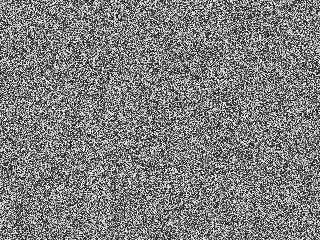How to seed to generate random numbers?
It does not generate the intended randomness.
I thought starting with a seed like $66 and xoring the two last lower bit and ror would give me the next random number
-
After some searching through ancient asm source code archives of mine I found this for x86 MSDOS NASM platform I was using back in the days:
;.rnd ;al=rnd num <0,ah>; .rnd: pusha mov cx,ax .rnd0: mov bx,[cs:.rnddat] mov ax,[cs:.rndtim] xor al,bh add ah,bh rcr ax,3 xor al,bl rcl ax,2 .rnd2: cmp al,ch jbe .rnde sub al,ch or ch,ch jnz .rnd2 sub al,al .rnde: mov ah,bl mov [cs:.rnddat],ax or al,1 xor ax,[fs:046Ch] add [cs:.rndtim],ax popa mov al,[cs:.rnddat] ret .rnddat:db 0,0 .rndtim:dw 0The idea is to have some stored number do some basic ALU operations like
+,*,/,<<,>>,&,^but ensure that no saturation occurs and usually swap ofH,Lof some value to keep the randomness in check. So port this to your asm but I strongly recommend to code it and try on PC first to see if the randomness is OK for your task.BTW you can use also the program memory or any ROM content as base for randomness ... this is also exploiting the internal RTC block so you have to omit that part or add a timer or just loop through bunch of non empty data instead.
[0000:046C] are 4 Bytes master clock count (long integer) 0 = midnight and increments until a 24 hour equiv.I found even older demo of mine called NoSignal (from 1997 in TASM) which have rnd inside:
.386P IDEAL MODEL TINY CODESEG STARTUPCODE main: mov ax,19 ;320*200*256 int 16 push 0A000h ;Video segment pop es ;keyboard test,speaker delay v si=256 l0: ror ax,cl ;rnd...ax add ax,di stosw ;plot... loop r1 ;speaker delay... mov cx,si out 61h,al r1: or di,di jnz l0 push ax mov ah,1 ;test keyboard int 16h pop ax jz l0 ende: sub ax,ax ;turn off speaker and exit out 61h,al int 16h mov ax,3 int 16 ret ENDIt fill screen and speaker with white noise as if no antenna cable in analog TV. This version is 44 Bytes long, pseudo random generator starts at label
l0:axis the generated number (and also the prevvious generated number like you temp)diis incrementing (something like actual time)...clis decrementing
so if I look at it right it should be enough:
rnd:ror ax,cl ;rnd...ax add ax,di inc di dec cl retand add
push/popstore the registers/values if needed. If you need something more sophisticated then use modulo prime arithmetics.[edit1] simple C++ pseudo random generator
WORD rnd_d0=0x66; // these are seed numbers if not selected right then the randomness is not good WORD rnd_d1=0x5A; // these give fairly good results WORD rnd_d2=0xC3; WORD rnd() { rnd_d0^=rnd_d1|rnd_d2; // xor rnd_d1*=rnd_d2; // mul rnd_d2+=rnd_d1; // add rnd_d0=(rnd_d0<<8)|(rnd_d0>>8); // 8bit halves swap return rnd_d0; }The above random generators was tighted to DOS environment time or special usage. This one is not ... the randomness is like this:

when I use it to fill NoSignal image window the result is this:

and here Gif animation:

The NoSignal fill code is as this:
for (int y=0;y<ys;y++) for (int x=0;x<xs;x++) pyx[y][x]=0x00010101*int(rnd()>>8);So just high
8bitfrom the16bitpseudo random number is used the multiplication just converts this8bitnumber to gray-scale color.xs,ysis image sizepyxis the direct image pointer to its lines
Do not change the seed numbers without proper testing with this on PC
Wrongly selected seeds leads to no randomness at all. If you want to safely seed (without testing) then seed with provided constants and then call
rnd()as much times as the new seed number of yours is. Busted this right now so there may be better seeds for this, these are just the first ones I found that gives fairly good resultsThese seeds are also good:
WORD rnd_d0=0x37A6; WORD rnd_d1=0x377A; WORD rnd_d2=0x3BC3;讨论(0)
- 热议问题

 加载中...
加载中...